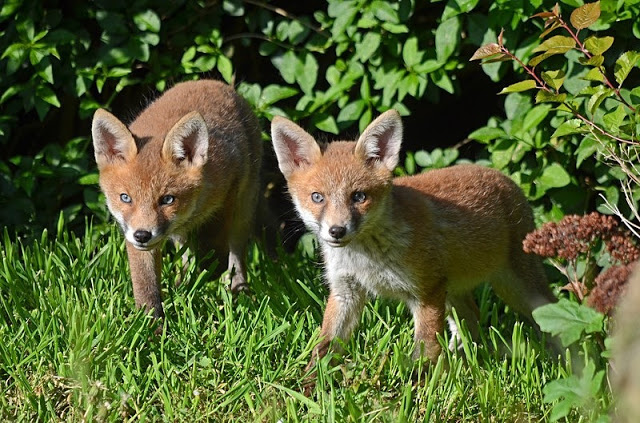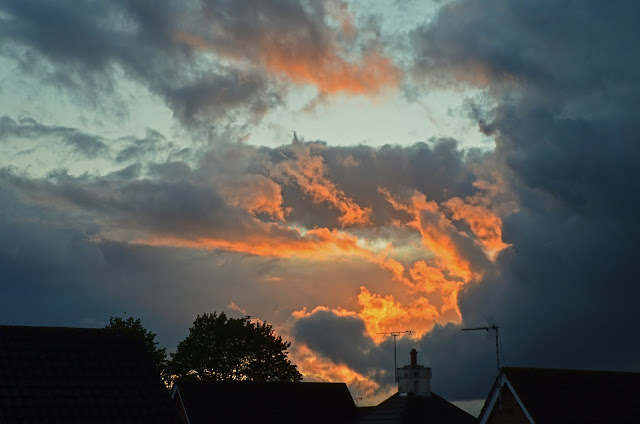2020 comes to an end today.
It
has been a truly awful year with the immense human tragedy that is the Covid-19 pandemic and the greatest ever act of national self-harm to our society and economy
that is the final Brexit departure from the EU. All that without even considering the escalating climate emergency and the continuing massive biodiversity loss and extinction.
A lot has occurred during 2020, most
notably the tragic loss of so many lives and the huge impact on almost everyone
due to the collapse of large parts of our economy. Political leadership,
confident decision-making, clear communication and general competency seems to
have gone missing which has directly resulted in worse health and economic
outcomes for the UK compared with our European neighbours.
This review of the year does not aim
to comment further on any of that, much of which is self-evident to even those
who only take a casual interest in what has occurred.
The first few days of 2020 started normally
for me with some winter birding (as it usually does) in East Anglia and south
west England to kick off my 2020 year list …. see here.
This was then
followed by my first ever trip to the Republic of Ireland from 28th
January to 7th February 2020 …. see here. Apart from
wildlife watching and photography, I needed a self-designated "Bollocks to Brexit" trip in a
bid to escape a nation in which a far too vocal minority were exhibiting
narrow-minded and economically illiterate English nationalism at best and
bigotry and racism and worst. I wanted to avoid all coverage of the inevitable Brexit triumphalism and celebrations of that minority on 31st January 2020.
I deduced that the
famed Irish hospitality, Guinness and traditional music would live up to
expectation (it did) and that it would provide a perfect distraction and
antidote (it did). Furthermore, the timing of my trip ensured that I would be
away on 1st February 2020 for Imbolc, a Gaelic traditional festival marking
the beginning of spring and something far more meaningful and worthy of
celebration than Brexit.
However, particularly during the trip
to the Republic of Ireland, worrying news was beginning to come out of China
regarding a new emerging virus. In Europe, life seemed to carry on as normal
before Italy and then Spain and then the rest of us quickly descended in to a
dystopian nightmare that continues to this day despite the temporary respite
during the summer months.
Eventually and belatedly (sorry, I
was going to try and avoid the politics of the battle against the Covid-19 pandemic), after
introducing advisory and then mandatory
measures in respect of "social distancing" and
"self-isolation", the Government announced the first national lockdown on
23rd March 2020 including severe restrictions on all movement and
travel.
The initial measures and then the
complete national lockdown had an immediate impact for me …. see here. All my planned spring and early summer wildlife
watching trips around East Anglia and to Somerset, Wales and the Scottish
Highlands quickly disappeared from my calendar. Furthermore, a provisional itinerary in respect
of a late August/early September 2020 trip across the Bay of Biscay (for cetaceans
and seabirds) and around Asturias and Castille y Leon in northern Spain (for
Iberian Brown Bear and Iberian Wolf) did not progress beyond the initial
research that I had already done.
These events prompted me to set up this blog with my first post on 17th March 2020.
After 9 months and 357 further posts and a lot of photos, here we are at the end of 2020.
The events in March 2020 also
meant that I needed a Plan B .... see here and here.
Since mid-March 2020, I have regularly visited 2 local patch sites within walking distance from my home: St. Nicholas Church and surrounding areas and Noak Bridge Nature Reserve.
In addition, I also visited Gloucester Park until 2
Here are some photos of my 2 principal local patch sites.
St. Nicholas Church and surrounding areas ....
Noak Bridge Nature Reserve ....
Gloucester Park ....
If we were going to have to face the challenges of the Covid-19 pandemic, at least I was glad that it initially happened during the spring since this is a time of hope and of rebirth and re-emergence.
As I know has been
the experience of many people, "the peace of wild
things" has proved to be a complete escape from the daily
newsfeed and brought some enjoyment, peace and solace. "In times of crisis, the
natural world is a source of both joy and solace".
Although I had visited St. Nicholas Church and surrounding
areas occasionally over recent years, Noak Bridge Nature Reserve was
a new experience for me.
During the initial national lockdown period and since,
both my local patch sites have enabled me to reconnect with my local area,
substantially increase my knowledge and awareness of nature and wildlife within
them and understand the seasonal rhythms (phenology) as the weeks and months have
passed.
“Noticing nature is the greatest
gift you can get from lockdown” .... this has certainly proved to
be the case.
My regular visits to St. Nicholas Church and surrounding
areas since mid-March 2020 have enabled me to add 10 bird
species, 2 mammal species, 6 butterfly species and 4 dragonfly and damselfly
species to my site list totals bringing them to the following at the year end:
Birds = 51
Mammals = 6
Butterflies = 21
Dragonflies and damselflies = 7
Reptiles = 1
Amphibians = 0
I also recorded Santa hanging around from mid-December 2020 😀
At Noak Bridge Nature Reserve,
all my records since mid-March 2020 are new for me and my site list totals are
as follows at the year end:
Birds = 39
Mammals = 2
Butterflies= 18
Dragonflies and damselflies = 9
Reptiles = 1
Amphibians = 0
There have been so many highlights
for me during 2020.
In terms of one single visit, nothing
really gets close to International Dawn Chorus Day on 3rd May 2020.
With regard to wildlife, there has
been so much to enjoy in seeing a wide variety of birds and hearing their calls
and songs during spring and early summer, seeing many different species
of butterflies and dragonflies and damselflies as summer progressed and
then seeing the colours and fruits of autumn and the arrival of winter visitors.
However, at St. Nicholas Church and surrounding
areas, I have had so many wonderful experiences watching the Red
Foxes and Badgers and these are
unforgettable highlights.
On 9th May 2020, I
discovered the location of a family of Red Foxes, a vixen and her 4
very small cubs, and I have continued to watch them regularly since that time
although the cubs are now well grown and often hard to distinguish from an
adult. Here are some of the many photos that I have managed to take, starting
with 2 photos of the vixen and then several of the cubs:
Thank you Vulpes vulpes and Meles meles for all the enjoyment that you have given to me!
At Noak Bridge Nature Reserve,
the highlight for me, amongst all the wonderful wildlife that the site
supports, has been the many sightings of Common Lizards. I first
recorded this reptile on 16th April 2020 and, since that time, I saw Common Lizards on several visits during the spring and summer, sometimes just a
single animal but a maximum of 4 animals in the same general area around the
boardwalks at the eastern end of the reserve.
During 2020, there were so many highlights amongst the birds, butterflies, dragonflies, damselflies, other insects and plants at both sites, not to mention too many photos to review to select a "best of ....".
A review of 2020 would not be complete without a mention of lockdown window which fortunately did have periods of being non-lockdown window. With the national lockdown and restrictions on travel, many people started recording wildlife from the windows of their homes and their gardens from late March 2020. I did the same and I have managed to record 34 bird species from my flat.
My records have included Common Buzzard, Sparrowhawk, Green Woodpecker, Great Spotted Woodpecker, Jay, Grey Heron, Cormorant, Mallard, Canada Goose, Greylag Goose, Herring Gull, Lesser Black-backed Gull, Black-headed Gull and Ring-necked Parakeet plus the usual common resident birds. During the spring and summer, I saw migrant species such as Swift, Swallow, House Martin, Blackcap and Chiffchaff.
In addition, I have seen both Red Foxes and Grey Squirrels on many occasions and twice heard the very distinctive sound of "barking" Reeves' Muntjacs.
On 8th May 2020, I even saw the Red Arrows!
Lockdown window also provided some memorable sky views during 2020.
Sunrises ....
Sunsets ....
Rainbows ....
The Moon ....
Venus ....
The conjunction of Jupiter and Saturn ....
Not to mention plane contrails and a paraglider!
And when the weather precluded visiting my local patch sites or sky-gazing from my flat, I read 3 excellent and timely books, all of which are highly recommended ....
"The Wild Remedy - How Nature Mends Us - A Diary" by Emma Mitchell
"Back to Nature: How to love life and save it" by Chris Packham and Megan McCubbin
Plus there was, and still is, the Self-Isolating Bird Club to follow on social media ....
And finally ....
Let’s hope 2021 is a much better, safer, healthier and greener and more sustainable year for us all .... for our local communities, our country and our planet.





























































No comments:
Post a Comment
If you feel like commenting on my blog, you can contact me by completing the comment form below. I will respond to all comments and enquiries and constructive criticism will always be welcomed.